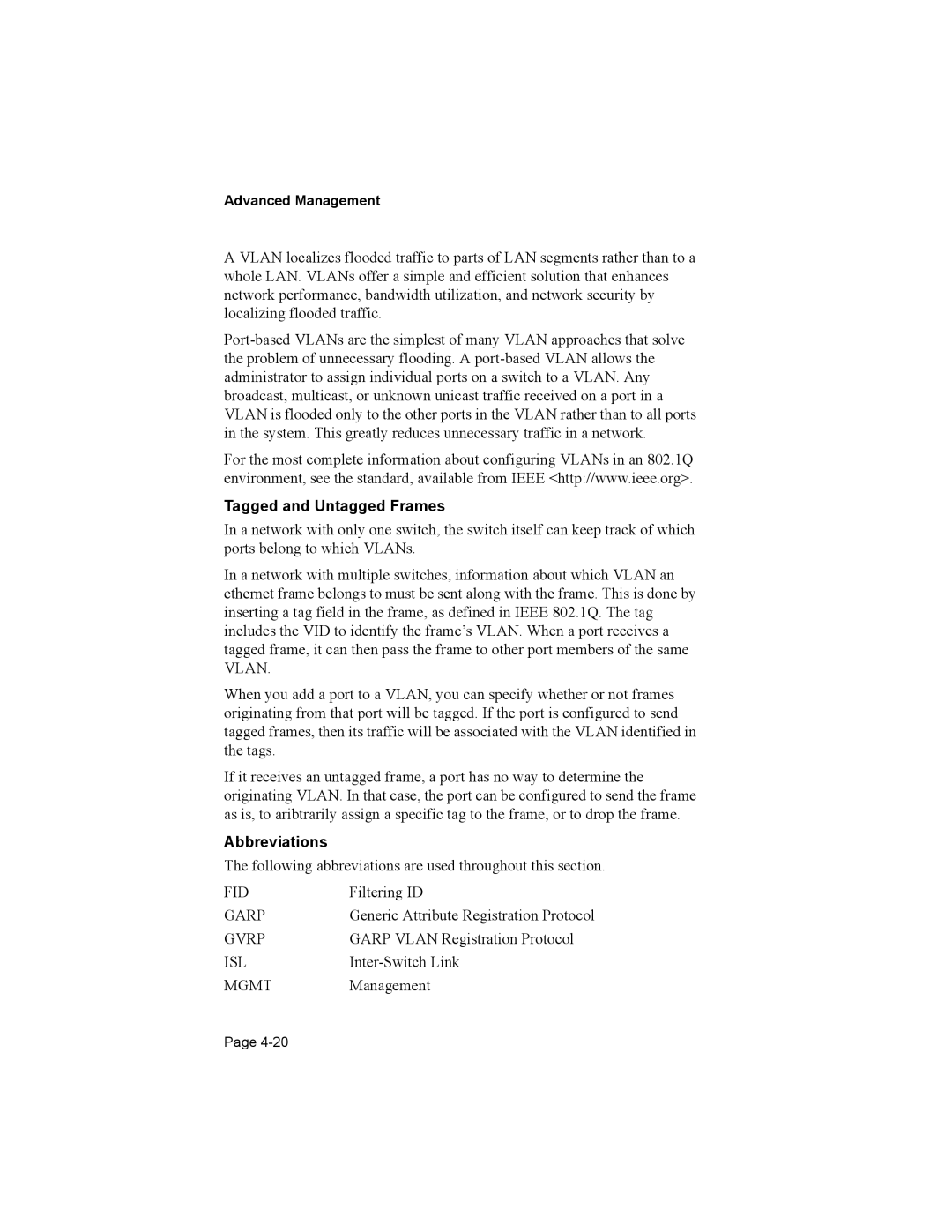Advanced Management
A VLAN localizes flooded traffic to parts of LAN segments rather than to a whole LAN. VLANs offer a simple and efficient solution that enhances network performance, bandwidth utilization, and network security by localizing flooded traffic.
For the most complete information about configuring VLANs in an 802.1Q environment, see the standard, available from IEEE <http://www.ieee.org>.
Tagged and Untagged Frames
In a network with only one switch, the switch itself can keep track of which ports belong to which VLANs.
In a network with multiple switches, information about which VLAN an ethernet frame belongs to must be sent along with the frame. This is done by inserting a tag field in the frame, as defined in IEEE 802.1Q. The tag includes the VID to identify the frame’s VLAN. When a port receives a tagged frame, it can then pass the frame to other port members of the same VLAN.
When you add a port to a VLAN, you can specify whether or not frames originating from that port will be tagged. If the port is configured to send tagged frames, then its traffic will be associated with the VLAN identified in the tags.
If it receives an untagged frame, a port has no way to determine the originating VLAN. In that case, the port can be configured to send the frame as is, to aribtrarily assign a specific tag to the frame, or to drop the frame.
Abbreviations
The following abbreviations are used throughout this section.
FID | Filtering ID |
GARP | Generic Attribute Registration Protocol |
GVRP | GARP VLAN Registration Protocol |
ISL | |
MGMT | Management |
Page
